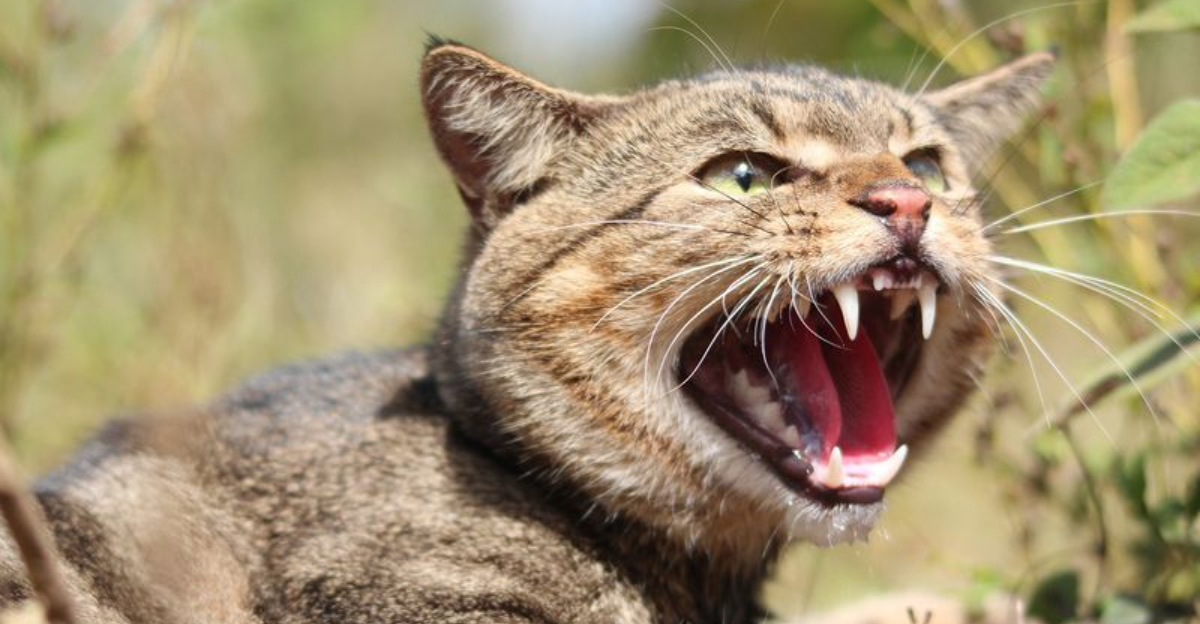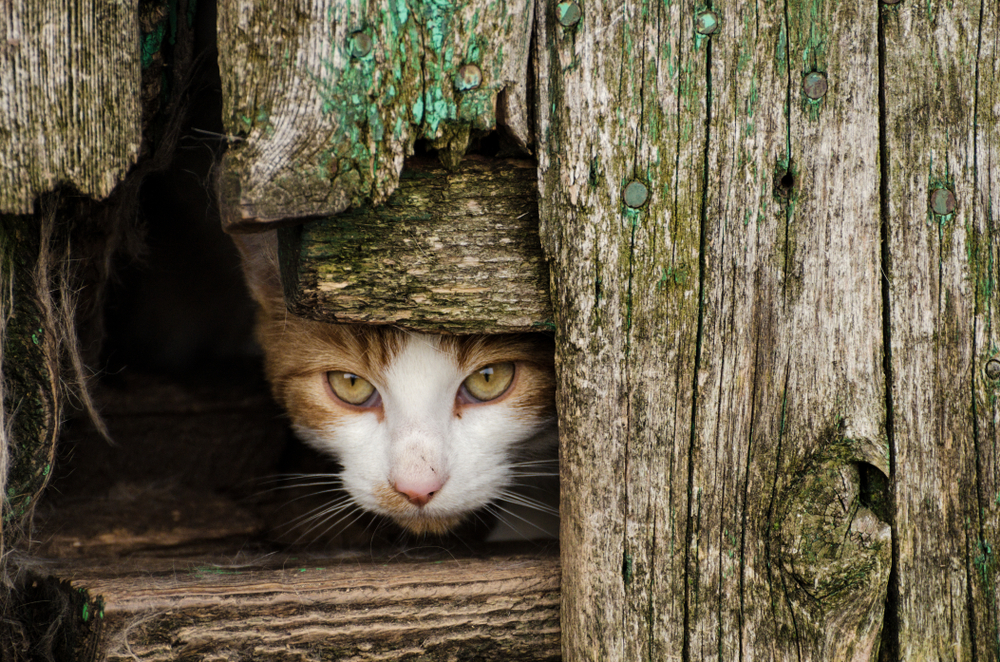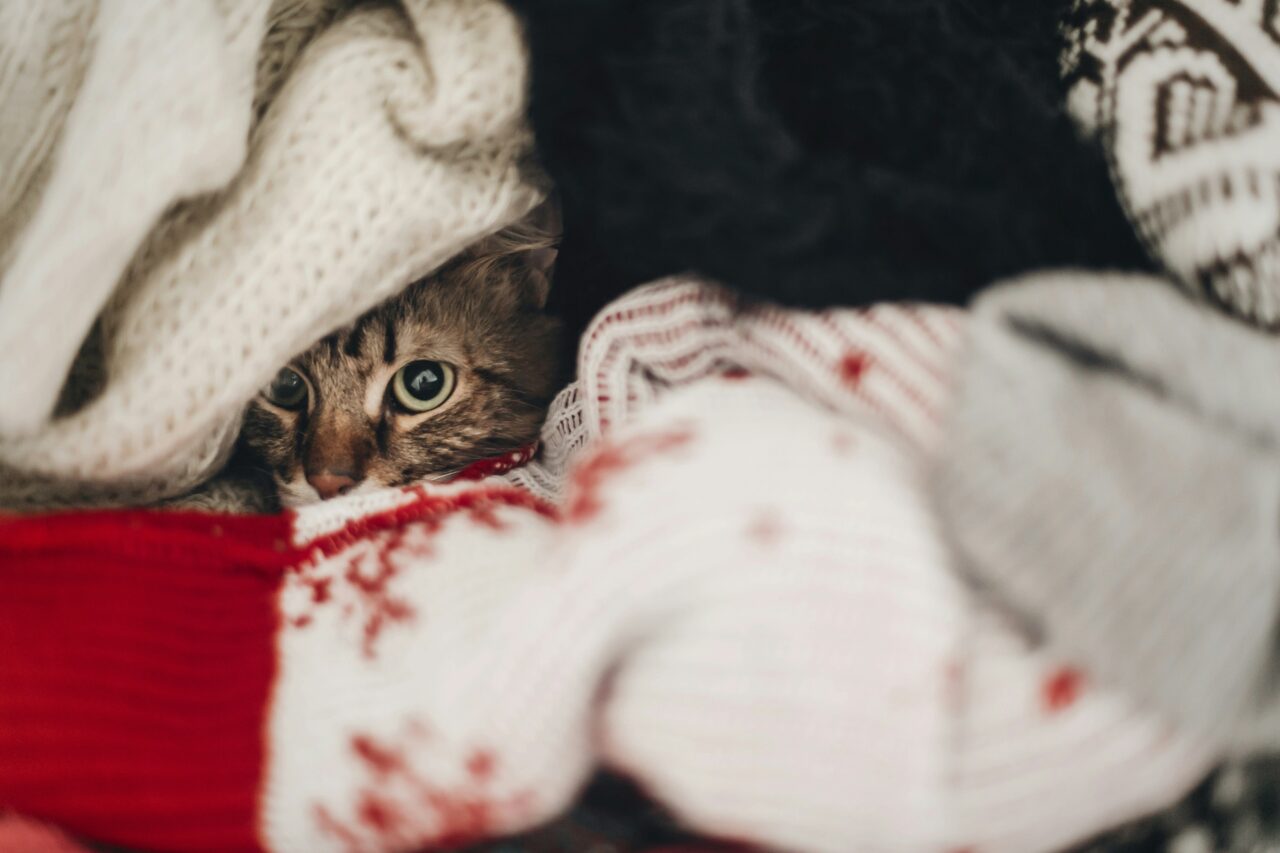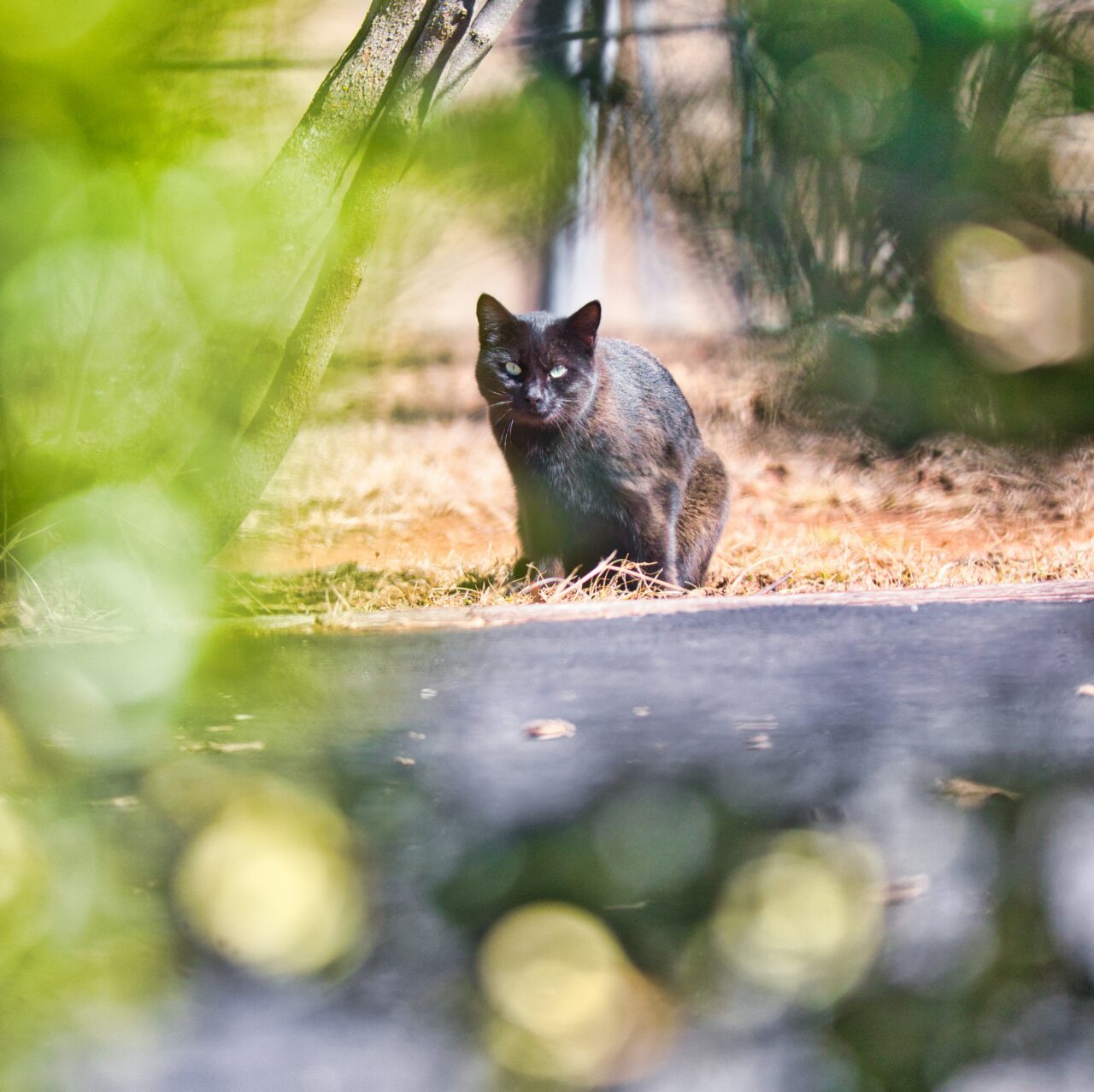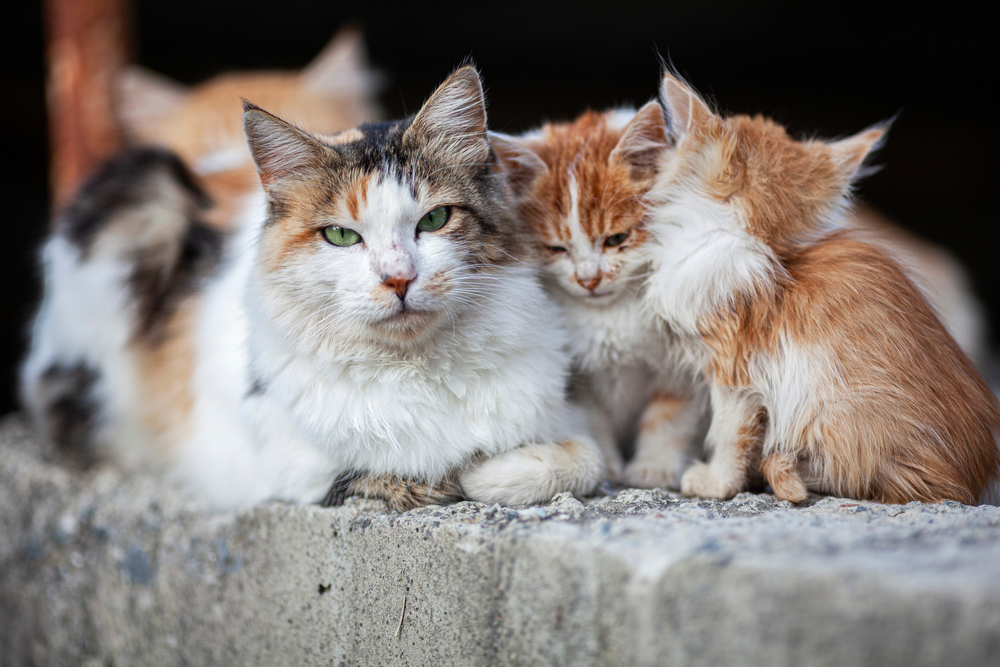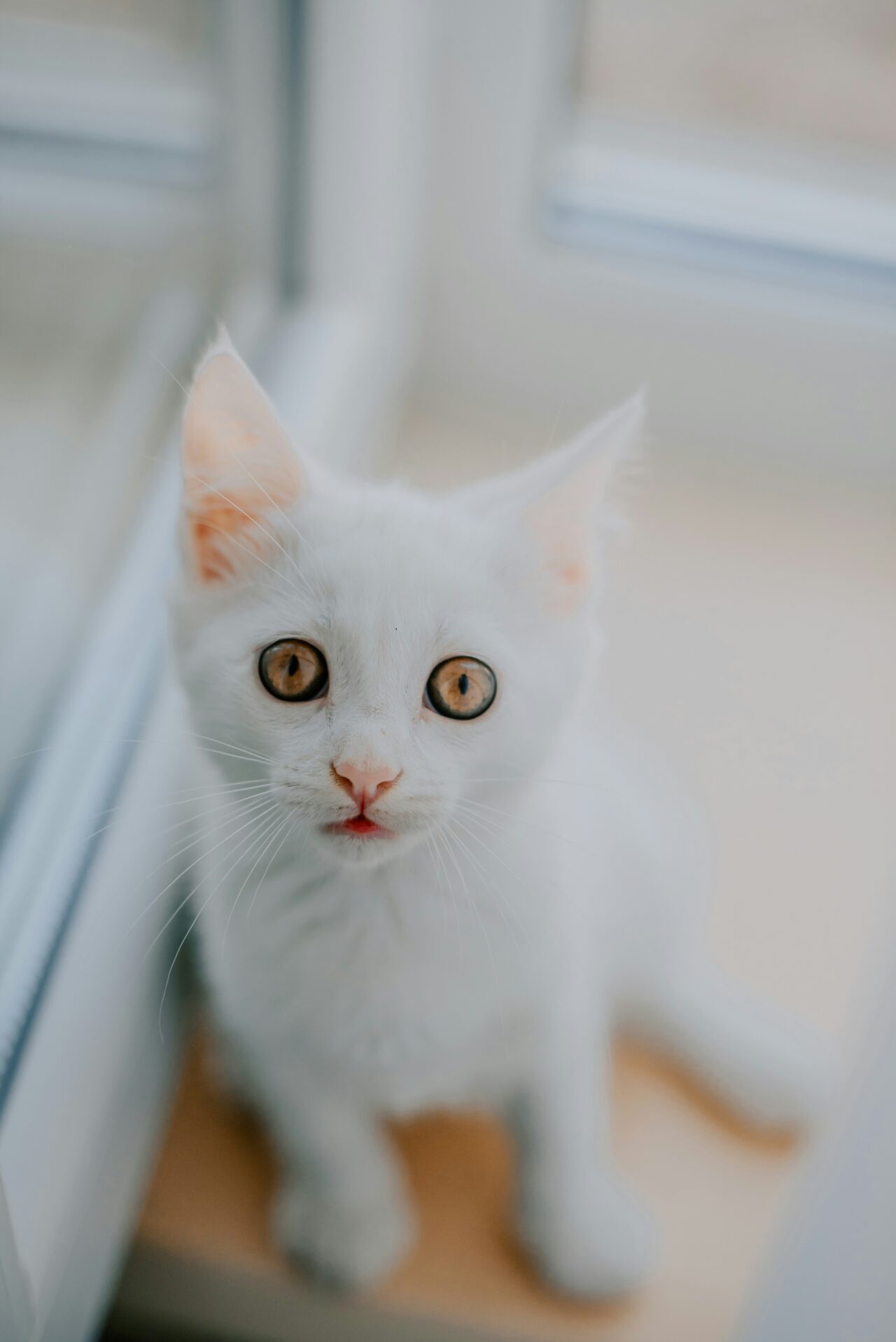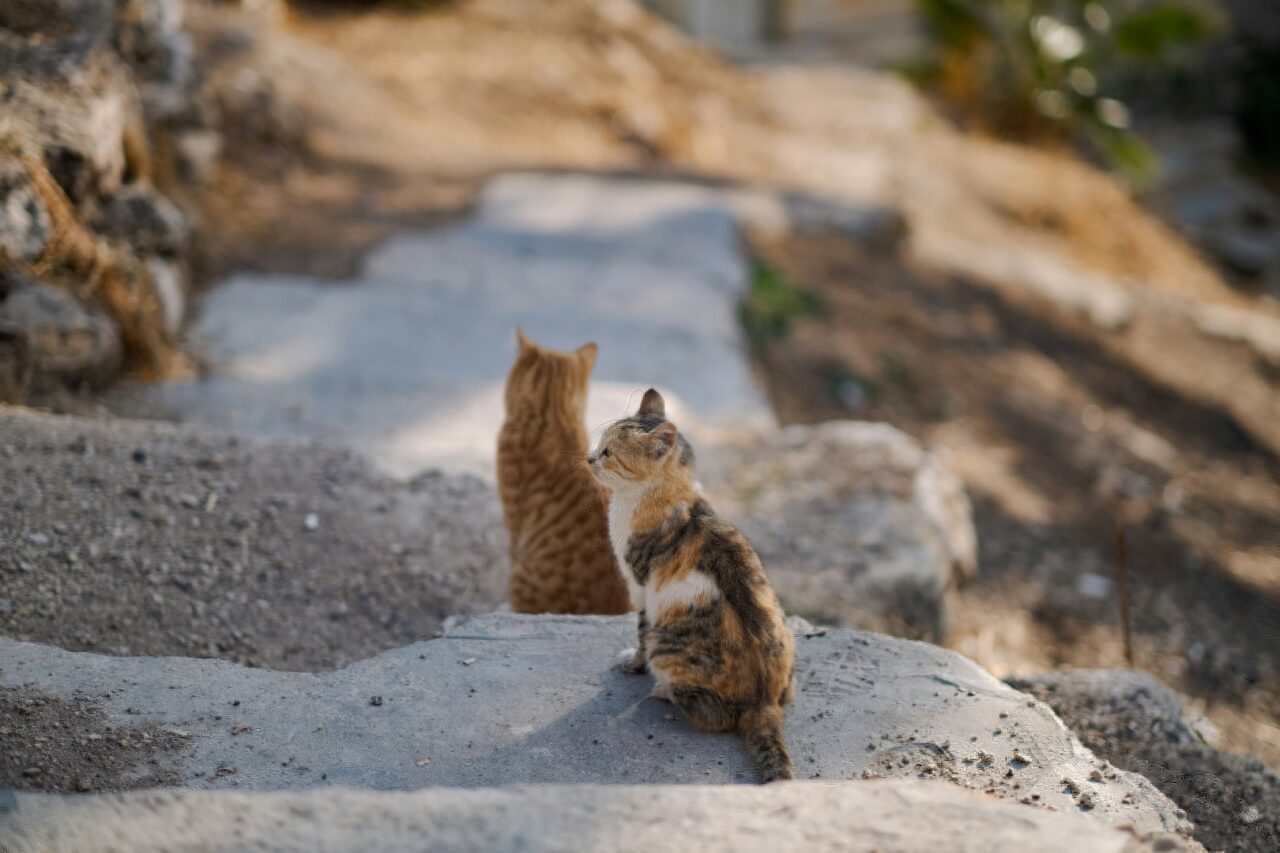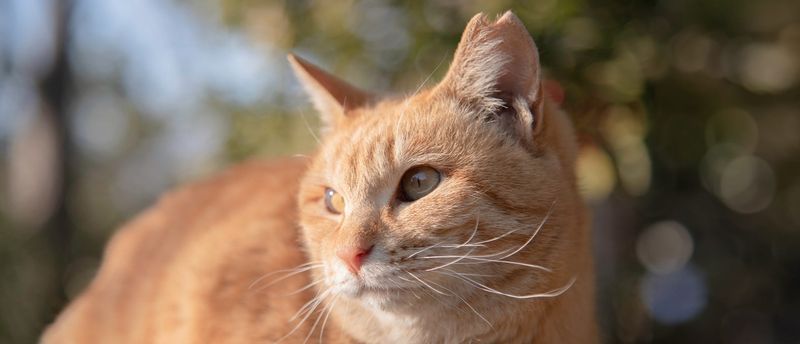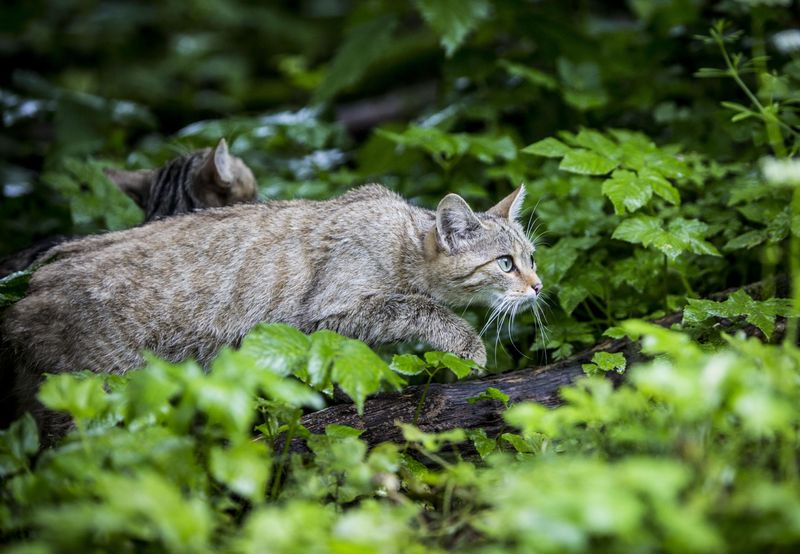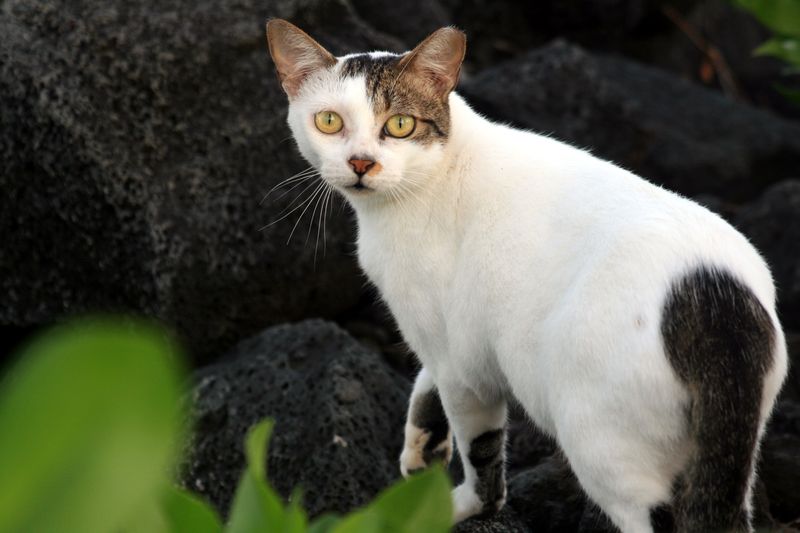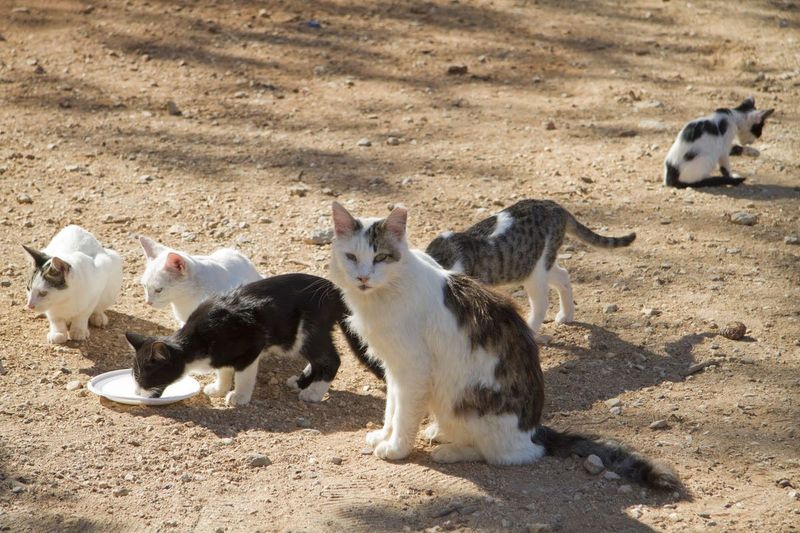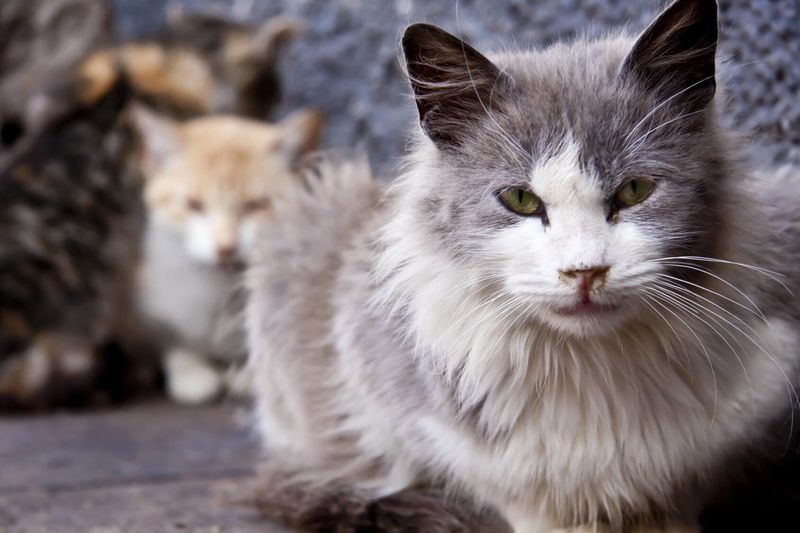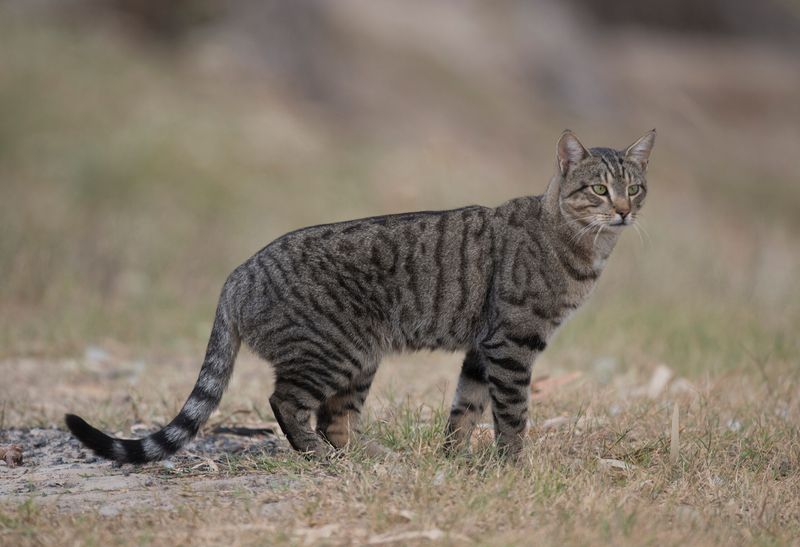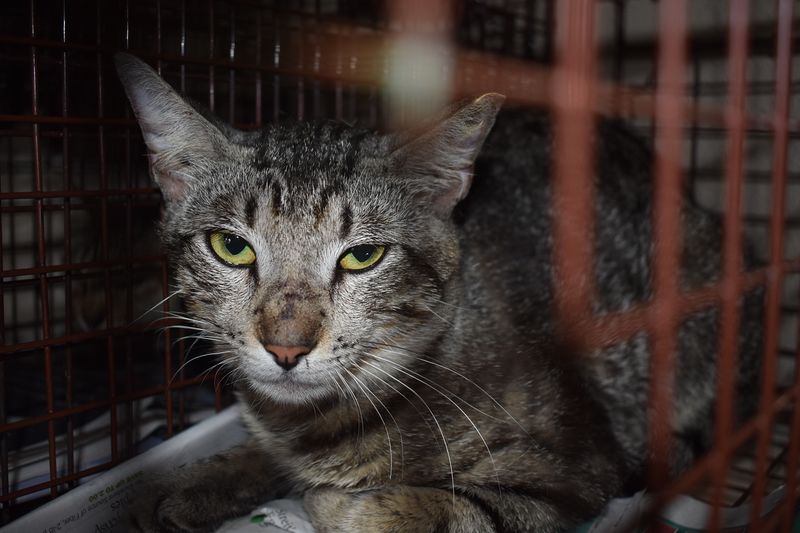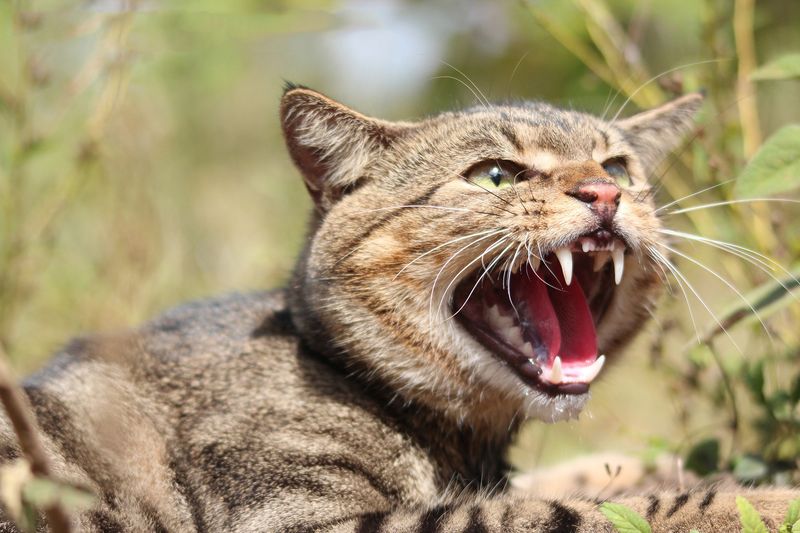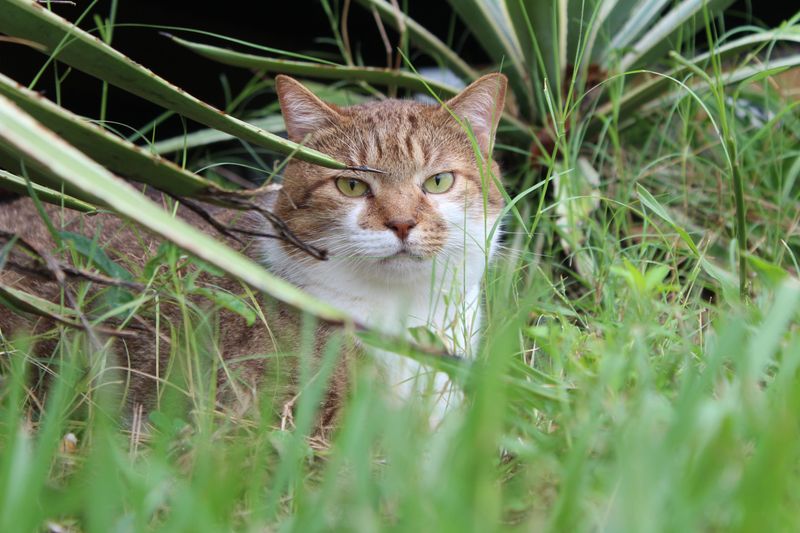📖 Table of Content:
- 1. No Attempts to Approach You
- 2. Displays Fear and Sees You As a Threat
- 3. She Is Hypervigilant
- 4. Her Coat Is Clean But Seems Rougher
- 5. Appears Only During Nighttime
- 6. Shows Signs of Being Part of a Feline Gang
- 7. Avoids Eye Contact
- 8. Territorial Behavior
- 9. Tense and Defensive Body Language
- 10. Signs of Scavenging
- 11. Unkempt Coat
- 12. Little Interest in Humans
- 13. Hesitant in Enclosed Spaces
- 14. Aggressive Reaction When Approached
- 15. Stays Hidden During the Day
If you’re anything like me, then you also have this insatiable desire to greet and approach every kitty you see on the street. Some of them happen to be extremely friendly, while others not so much.
A few years ago, though, someone told me that I have to be cautious about which cat I approach since some strays can be dangerous.
“Oh, pawlease! Like cats can be anything but adorable and friendly! And besides, I’m a pro cat whisperer. I know they’re not dangerous and will never hurt me.”
But, that concerned advice stirred up curiosity in me and I decided to explore the mysterious world of feral cats. What are they even? And how can I tell if a cat is feral or not?
If you’re unsure whether you’ll be able to differentiate a feral feline from a stray, here are 6 telltale signs that can help you be certain you’ve come face to face with a feral fluff.
1. No Attempts to Approach You
If you see a cat on the street and address her with the good-old “Pspsps!” to which she meows back at you, she’s definitely not a feral. An added bonus is if she decides to approach you and let you pet her.
Feral cats don’t usually meow as this vocalization is reserved for felines who are used to human interaction. Meowing is reserved for domesticated and indoor kitties, and for strays who love to say hello to people passing by.
2. Displays Fear and Sees You As a Threat
Sometimes, both strays and ferals will fear your presence. They will see you as a threat and will be genuinely afraid of you. They may hiss and be generally distressed.
However, the difference between a stray and a feral is in the way they act after your first interaction. A stray feline will usually relax after a couple of minutes and willingly decide to approach you. But a feral cat will hold onto her hostile attitude and might even become aggressive and attack you if you try to approach her.
3. She Is Hypervigilant
A feral cat’s body language will always let you know that she’s alert. Her ears will be down, her eyes wide open, she’ll have an arched back and a twitching tail. She will be hypervigilant and in a constant state of “fight or flight.”
Her posture will remain tense, ready to react at a moment’s notice. She may also avoid direct eye contact, as this is a sign of potential aggression or threat. Every movement she makes will be cautious, signaling her constant readiness to defend herself if necessary.
4. Her Coat Is Clean But Seems Rougher
Many people believe that an ugly, dirty, and unkempt feline is always feral. If they see her on their doorstep, they almost always shoo her away, throwing objects in her direction.
However, it’s far more likely that that kind of cat is actually a stray. That’s because neglecting her appearance and failing to groom herself is a very natural response of a kitty in distress, or a kitty who was recently been abandoned by her humans. Since feral cats are used to living without human touch, they will hardly ever fail to groom themselves. Their coat might be rougher and coarser than that of indoor kitties, but they will always be well-groomed.
5. Appears Only During Nighttime
A feral feline will mostly prefer nocturnal outings. She will hardly ever make an appearance during the day. So, if you see a kitty in the middle of the day that looks like she’s not someone’s indoor fluffball, then you have probably encountered a stray.
Feral cats are naturally more active at night, using the cover of darkness to hunt or scavenge for food. Their preference for nighttime activity helps them avoid human interaction and stay safe. If the cat appears wary and keeps its distance, it’s another sign of its feral nature.
6. Shows Signs of Being Part of a Feline Gang
Wild cats are not lone wolves. They tend to stick to their pack where they usually have some rules and hierarchy that they greatly respect. Cats in general are social creatures, and they like to live in groups. For indoor kitties, their group, pack, or gang if you will, consists of their humans and other pets (if any).
As for ferals, their group is made up of other ferals in their surroundings, or sometimes even strays that they have accepted after some time. Usually, the oldest feral is the leader. They all live together, groom each other, take care of each other’s kittens, and share hunting territory (but don’t hunt together). They respect their little community and protect it at all costs.
7. Avoids Eye Contact
Feral cats typically avoid making eye contact with humans, conveying a strong sense of independence and wariness. When you encounter such a cat, you’ll notice that she will look away or turn her head to avoid meeting your gaze. This behavior is a survival instinct, helping her to feel less threatened.
In situations where a feral cat is approached, she might not react to your presence at all, maintaining her distance. This lack of response can be mistaken for indifference, but it’s actually a clear sign of her wild nature. Understanding this can help in managing interactions gently.
8. Territorial Behavior
Marking their territory is a key behavior for feral cats, who use scratching and scent marking to establish their domain. Trees, fences, and other structures may be marked as a way to define their space and ward off other animals, ensuring their survival.
Territorial cats are usually aggressive towards intruders, often engaging in loud, vocal disputes. Observing these behaviors can help identify a feral cat, allowing you to approach the situation with care. Being aware of her territorial nature can prevent unintended confrontations, making it easier to plan safe interventions.
9. Tense and Defensive Body Language
When a cat’s body language is tense and defensive, it often indicates a feral nature. You might see her with an arched back, fluffed-up tail, and ears flattened against her head. These physical cues demonstrate her readiness to defend herself if threatened.
A feral cat’s defensive posture is a clear signal to keep your distance, as she perceives any approach as a potential threat. By recognizing these signs, you can respect her boundaries and avoid escalating the situation. This understanding is essential for safely navigating interactions with feral cats.
10. Signs of Scavenging
Relying on their instincts, feral cats often scavenge for food in urban areas. They might be spotted searching through trash or hunting small animals. Their keen sense of smell helps them locate food in even the most unlikely places.
This scavenging behavior is a testament to their survival skills, as they adapt to varied environments. By recognizing these signs, you can better understand the challenges feral cats face and find ways to support them through managed feeding programs or shelters.
11. Unkempt Coat
An untidy coat is typical of a feral cat, showing the absence of regular grooming and attention. Unlike their domestic counterparts, feral cats tend to have a rougher look due to their outdoor lifestyle.
The coat might appear matted or dirty, though the cat herself isn’t necessarily unhealthy. This natural ruggedness is part of her adaptation to the wild, surviving without human assistance. By recognizing this sign, you can distinguish between a stray and a feral cat, helping in deciding the right approach for care.
12. Little Interest in Humans
Feral cats usually show little to no interest in human interaction, maintaining a safe distance from people. You’ll find that even when offered food, a feral cat might be hesitant or completely ignore the gesture.
This behavior is rooted in their wild instincts, valuing self-reliance over dependency on humans. By observing this, you can gauge her comfort levels and proceed with caution. Understanding her reluctance helps in creating non-intrusive ways to offer support, such as setting up feeding stations away from busy areas.
13. Hesitant in Enclosed Spaces
Instinctively cautious, feral cats hesitate to enter enclosed spaces like homes or barns. You might spot them lingering near doors but seldom crossing the threshold, always alert and prepared to flee if necessary.
This hesitation is a survival mechanism, allowing her to stay alert to potential dangers. Recognizing this trait can help in building trust over time, using patience and understanding. By respecting her need for open spaces, you can create a more welcoming environment that encourages gradual interaction.
14. Aggressive Reaction When Approached
When a feral cat reacts aggressively to being approached, it reflects her wild nature. Hissing, growling, or clawing are her ways of defending herself, ensuring safety when she feels cornered or in danger.
Understanding this behavior is crucial in managing encounters safely. By giving her space and avoiding sudden movements, you reduce the risk of confrontation. Recognizing her need for distance can lead to more positive interactions, promoting coexistence in shared environments.
15. Stays Hidden During the Day
Feral cats often prefer to stay hidden or out of sight during the day, using natural cover to avoid detection. You might find her peering from bushes or hiding under porches, always vigilant and ready to retreat.
This behavior is a protective measure, conserving energy and minimizing exposure to threats. By identifying these hidden habits, you can respect her space and approach support cautiously. Providing safe havens like outdoor shelters can encourage her to emerge more freely, fostering a sense of security in her environment.
